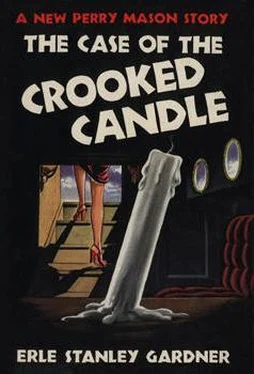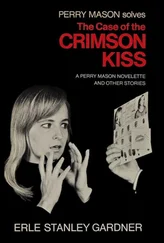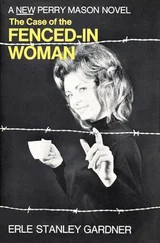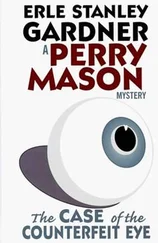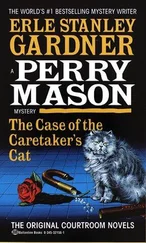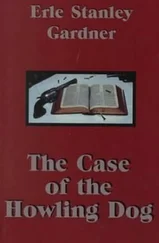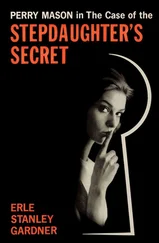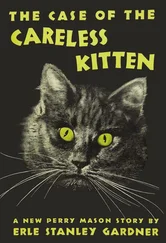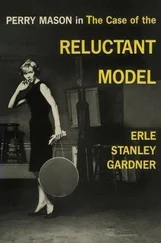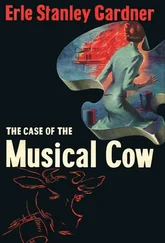Hamilton Burger and Maurice Linton seemed some what ill at ease. Judge Newark was writing down figures on a scratch pad. He glanced up, said, “Come in, Mr. Jackson. Where’s Mason?”
“He hasn’t showed up at the office yet. I’ve left word for him to call.”
“Very well,” Judge Newark said. “Sit down. Gentlemen, I am fully aware that under the law as it now exists, you can short-circuit a committing magistrate all together. However, I don’t like those tactics.”
Burger said apologetically, “I didn’t want to make the announcement publicly, Judge, but Mrs. Milfield now admits she was aboard that yacht about nine-thirty Friday night. A young man with whom she appears to be infatuated rented a rowboat from Cameron and took her out to that yacht.”
Judge Newark noted the time on the sheet of foolscap, made some more figures and pursed his lips.
“Does she claim her husband was alive then?”
“She claims he was dead. She claims she found him lying in what Counsel for the defense has referred to as position number one — the head near the brass-covered threshold leading to the stateroom.”
“Why didn’t she report it?” Judge Newark asked.
“Afraid that she’d be accused of murdering him. She tried to cover up.”
“Humph!”
“That’s exactly the way I felt about it,” Burger said.
Judge Newark began drawing aimless lines on the pad of legal paper. “The doctor’s testimony is that there wouldn’t have been an active hemorrhage for more than a period of some twenty minutes after the fatal blow had been struck. Therefore, the murder must have been committed at a time when the yacht had begun to tilt, but hadn’t as yet assumed its maximum tilt. Its tilt or list, however, must have increased within a period of twenty minutes after the crime so that the body rolled over to the low side of the yacht. Now the question is, how does that list take place? Is it a slow, gradual list, or does the boat tilt part way over, remain in that position for a while and then make a last sudden shift of position? That’s the important question in this case. Can you answer it?”
“I can’t,” Hamilton Burger admitted.
“That’s the important point in the case,” the judge said, his voice containing a rebuke.
“I know it,” Burger admitted, and then added ruefully, “Now...”
The door of the chambers opened and Perry Mason, buoyant and well-groomed, bowed and said, “Good morning, gentlemen.”
Judge Newark’s face showed relief. “Mr. Mason,” he said, “I have become very much interested in this question of tides. I think it’s going to be possible to solve the case by taking them into consideration. Will you tell me what you discovered last night? You seem to be the only one who realized the importance of getting this information.”
Mason grinned. “The boat seems to rest on the ground, about two hours and fifteen or twenty minutes after high tide. It tilts more or less gradually until it reaches an angle of around seventeen degrees. Then there is a quiescent period, following which the boat goes over with a lurch.”
“And the time when the boat takes that sudden lurch?”
“Last night it was about four hours after high tide.”
Judge Newark’s eyes sparkled with interest.
Mason said, “Lots of lawyers don’t like circumstantial evidence. I do. I’ve never had any quarrel with the evidence of circumstances. My quarrel is with the habit of giving events the obvious, careless interpretation. I dislike sloppy thinking.
“Take for instance in the present case. We know now that Mrs. Milfield was aboard that yacht at around nine thirty in the evening. We know that the yacht had tilted pretty well over by that time. We know that the force of water running out would cause the boat to tilt over so that the right or starboard side would be low. We know that someone lit a fresh candle at about the time the yacht was tilted over at an angle of seventeen degrees from the perpendicular. We know that candle was pressed down in a blob of wax that had been left from an earlier candle that had been placed in the same position.”
“Then do you think that Mrs. Milfield committed the crime?” Judge Newark asked. “If so, how? Bear in mind the medical testimony that the blow must have been a powerful one.”
“So,” Mason said cheerfully, “we’re faced with an apparent contradiction. The murder must have been committed when the yacht was on an even keel, otherwise that bloodstained footprint wouldn’t have been in the exact center of the tread on the companionway, yet if the body rolled down into what I have referred to on this diagram of mine as position number two, death must have occurred within a period of some twenty minutes before the boat took its last heavy list over to starboard.”
“You can’t reconcile those facts,” Burger said. “You’ll have to tie your solution to either one or the other. You can’t use both.”
Mason grinned. “The thing is so simple it slips right through your fingers.”
“I’m afraid I don’t follow you,” Burger said with offended dignity.
Mason said, “The man was killed and the body originally fell in position number two. The murderer rolled it back to position number one and then after a while the tide rolled it back again to position number two. But by that time the hemorrhage had stopped. Simply because we found bloodstained carpet under the head of the body when it was lying in position number two, we jumped to the conclusion that there must have been a hemorrhage when the tide rolled the body into that position. The other explanation is so simple and so obvious that it makes you mad you didn’t think of it right at the start.”
Judge Newark took Mason’s diagram. Hamilton Burger got up to walk around behind the judge’s desk, and peered down over his shoulder.
“I’ll be damned,” Burger said softly under his breath.
“But if the body fell into position number two,” Judge Newark pointed out, “then the man didn’t meet his death by striking his head against the edge of the threshold. What did cause his death?”
“The heavy iron poker that goes with the wood stove on the yacht.”
“Then if the man was struck from behind with a poker,” Judge Newark said, “it eliminates the theory of the strong powerful man. Even a woman could have smashed the poker down on Milfield’s head with sufficient force to have cracked his skull — if she’d struck him from behind and caught him unawares.”
“Exactly,” Mason said. “But the murderer overlooked one thing. Why was the body moved to position number one? Obviously because the murderer wanted to implicate Burbank. Once that New Orleans case was dragged into the open, Burbank would have been convicted on prejudice alone.
“So,” Mason went on, “the fact that the murderer tried to put Roger Burbank in this spot shows that it must have been someone who knew about Roger Burbank’s past.”
Mason picked up the diagram, folded it, pushed it back in his pocket, said, “Of course, it’s not up to me to tell the district attorney’s office how to run its business, but if I were Mr. Burger I would certainly start a little third degree. When the murderer moved that body, it was a giveaway. And that, gentlemen, gives you all I know about the case of the crooked candle. It’s enough to bring about a solution — if you work fast.”
Mason, Della Street, Carol Burbank, and Roger Burbank sat in Mason’s office. Roger Burbank was nervously smoking a cigar. Mason drummed lightly on the desk top. Della Street sat on the edge of her secretarial chair. Carol Burbank alone gave no outward indication of nervous tension.
Читать дальше
